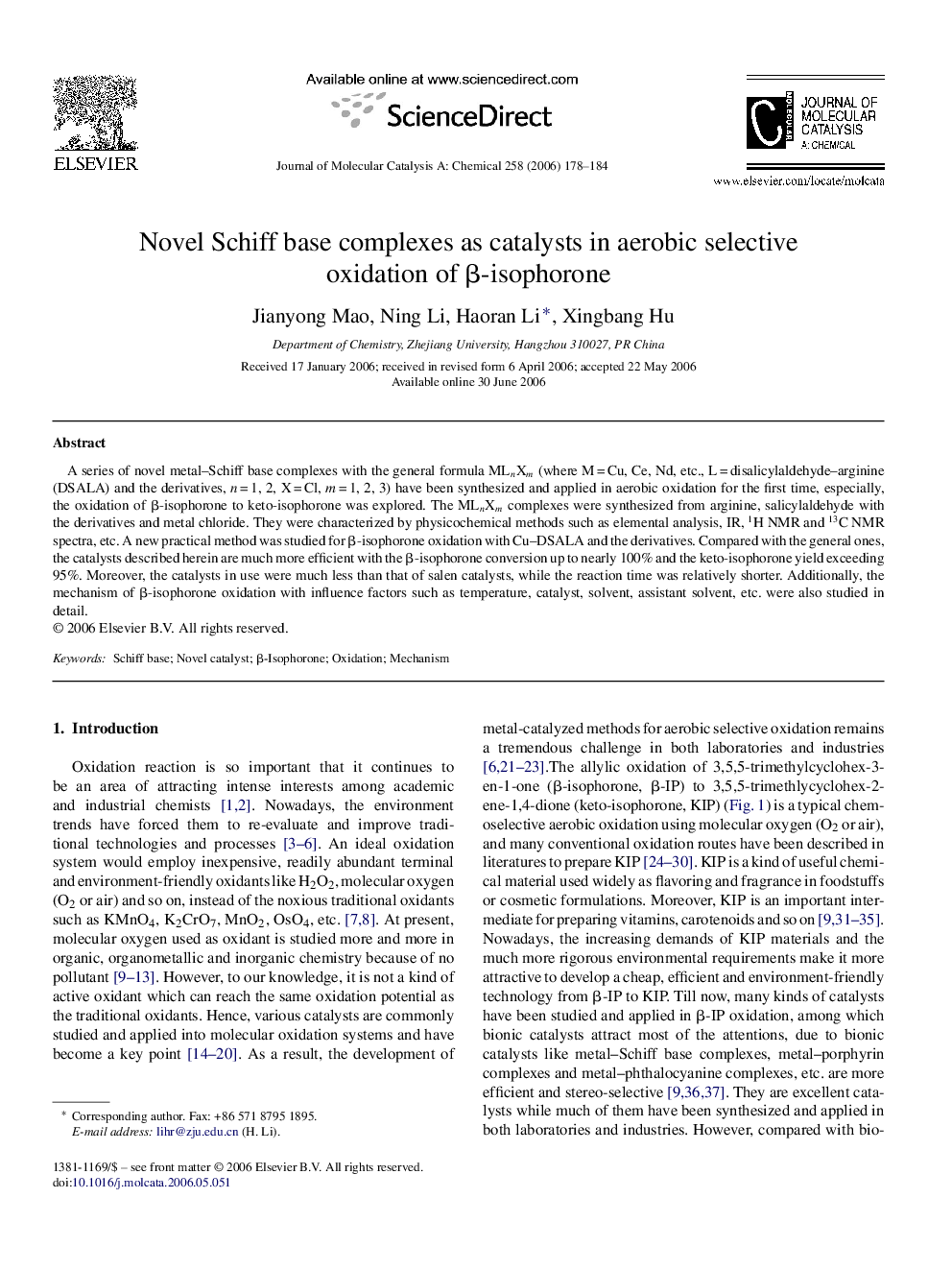| Article ID | Journal | Published Year | Pages | File Type |
|---|---|---|---|---|
| 68881 | Journal of Molecular Catalysis A: Chemical | 2006 | 7 Pages |
A series of novel metal–Schiff base complexes with the general formula MLnXm (where M = Cu, Ce, Nd, etc., L = disalicylaldehyde–arginine (DSALA) and the derivatives, n = 1, 2, X = Cl, m = 1, 2, 3) have been synthesized and applied in aerobic oxidation for the first time, especially, the oxidation of β-isophorone to keto-isophorone was explored. The MLnXm complexes were synthesized from arginine, salicylaldehyde with the derivatives and metal chloride. They were characterized by physicochemical methods such as elemental analysis, IR, 1H NMR and 13C NMR spectra, etc. A new practical method was studied for β-isophorone oxidation with Cu–DSALA and the derivatives. Compared with the general ones, the catalysts described herein are much more efficient with the β-isophorone conversion up to nearly 100% and the keto-isophorone yield exceeding 95%. Moreover, the catalysts in use were much less than that of salen catalysts, while the reaction time was relatively shorter. Additionally, the mechanism of β-isophorone oxidation with influence factors such as temperature, catalyst, solvent, assistant solvent, etc. were also studied in detail.
Graphical abstractA series of novel Schiff base complexes were synthesized on the bases of arginine, which has two kinds of asymmetric –NH2. The asymmetric complexes have been proven to be an efficient catalyst with high activity and selectivity in the oxidation of β-isophorone to keto-isophorone. Figure optionsDownload full-size imageDownload as PowerPoint slide
